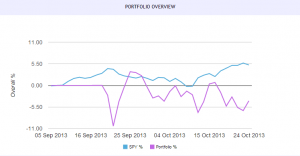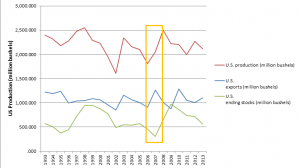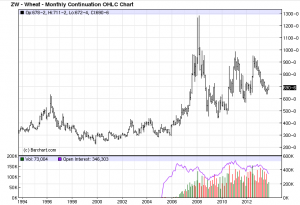A true summary
This week, I kept shorting and covering wheat and soybeans, though the contract amount is quite small. But the high price of soybean and wheat still made me trapped in the negative return. I kept reminding myself that I shouldn’t be a lazy trader even if it was the end of the game.
After six-week trading experience, I found myself understand the market much better than before. But what made me regret was that I still haven’t used more technical tools into my analysis and decision-making. All the graphs and data I dragged into my past blogs were in an entry level.
But looking backwards, I can still see my progress. At the very beginning, all I have done was just “stealing” some pictures which demonstrated the price tendency of different crops and crude oil and editing some media news to support my decision-making. In the next few weeks, I started to realize the importance of combining various factors with the crop market, such as weather, demand and supply in export and import countries, etc. I continued to learn lessons from my past trading experience, finding that things that can lend me a hand to make wiser decisions should not be limited within news.
Thanks for the practice
The knowledge learnt in undergraduate study was always regarded as too theoretical and hard to apply to the real world. However, the trading game did grant me a great opportunity to apply the economic theories into practice.
The Law of One Price seems to be not that boring and hard to understand when I played the true but artificial game. When I observed the updating price of the future contract, it’s also a good chance to trace back to the history to brush up on something that may be missed by me. The following graphs demonstrated the volumes of production, export and end stock in US from 1993 to 2013. You can easily find how important the stock was for the commodity market. In 2007-2008, the world food price crisis has brought out great shocks and volatility, not only to commodity market but also to the whole society.
The low production in US and the low ending stock resulted in the unprecedentedly high price in this period (2007-2008). Maybe that’s the reason why more and more developing countries, like China and Brazil, have increasing incentives to purchase large orders from US to protect themselves from a potentially sudden increase of demand and an unpredictable decrease of supply. As we have learnt in FRE501, given the concept of convenience yield, stock-out will never happen in the real world. Both merchants and local government will choose to store more when the stock has a subtle tendency of diminishing. The benefits brought by the convenience yields weighed much more than the cost of storage. With the absence of commodity stock, the whole world will be hard to sustain no matter how well-developed the country is. The high price of essential crops is a vital threats for people’s life quality, and for parts of the world like Africa, it can undoubtedly threat people’s life.
Process is bigger than result!
Although “texting messages when driving” is such a high-risky and impossible task, we all accomplish it well with different “harvests”. The uncertainty and unpredictability are what made this game more charming and harder to control. I’m pretty sure that I’ll continue to keep my eyes on my portfolio performance and make some unpressured trades in the following weeks. What made it much more relaxing is no need for writing something after trading any more~
Cons, MFRE-er!
Vanilla



